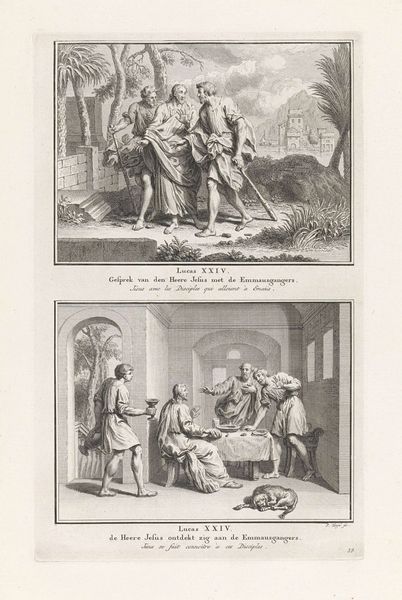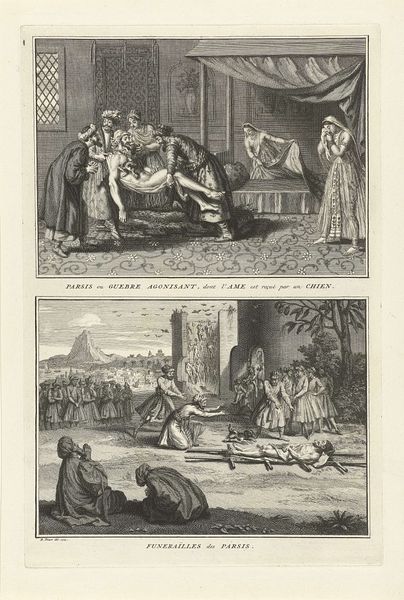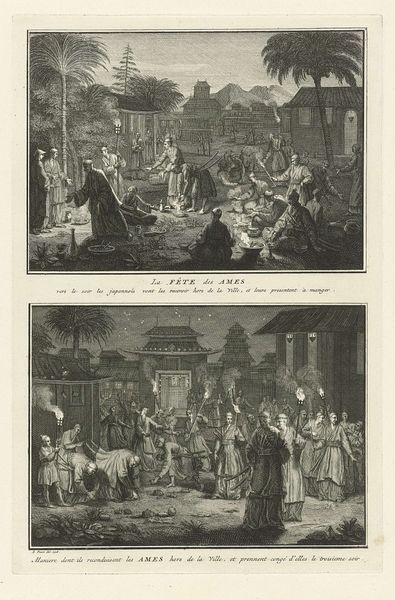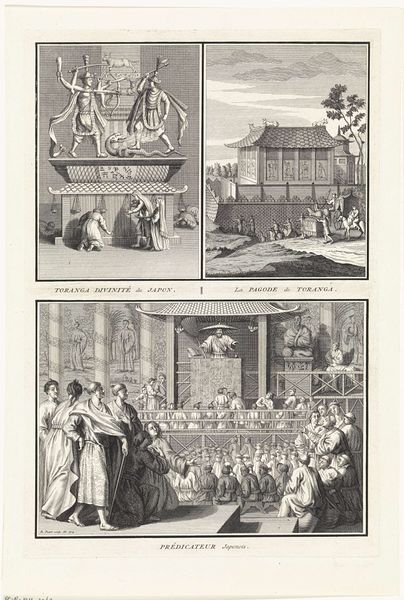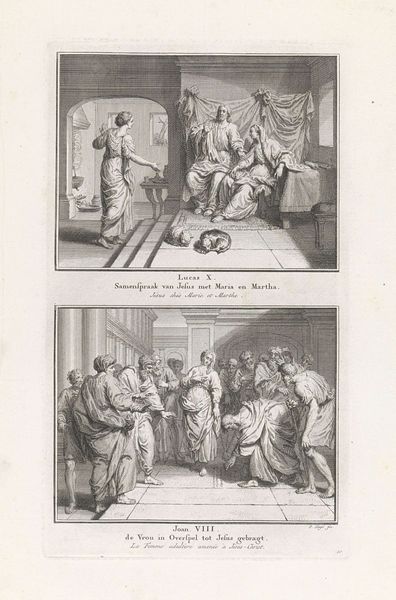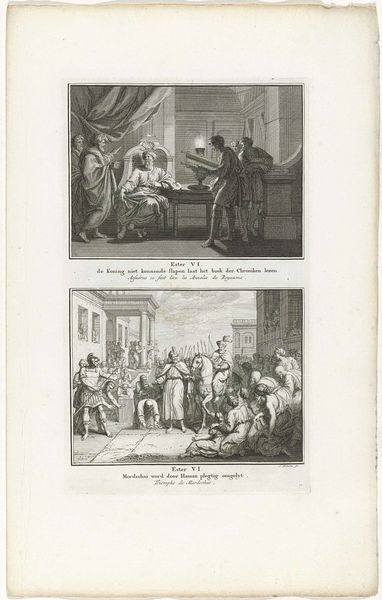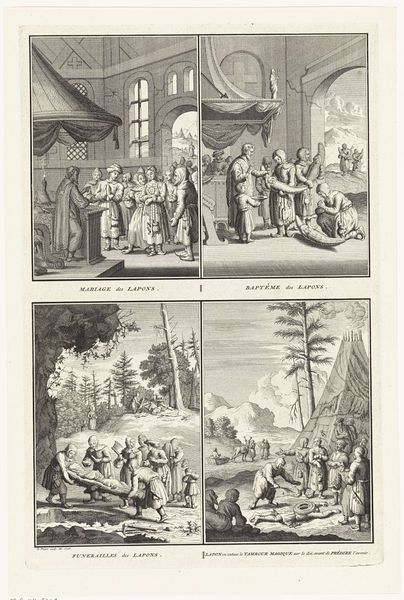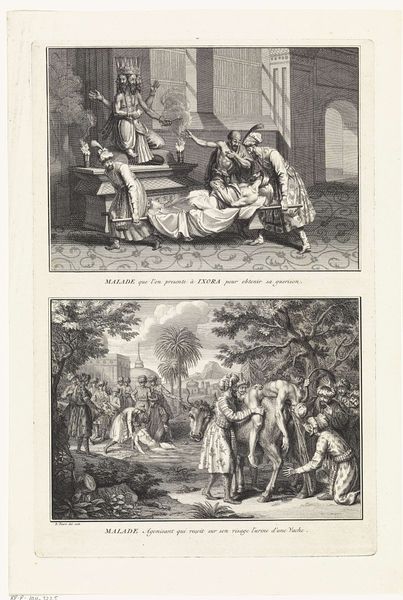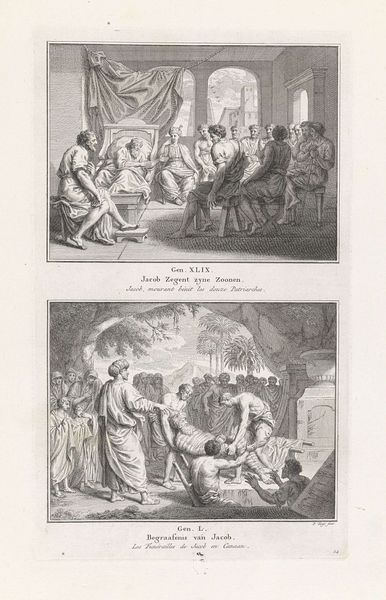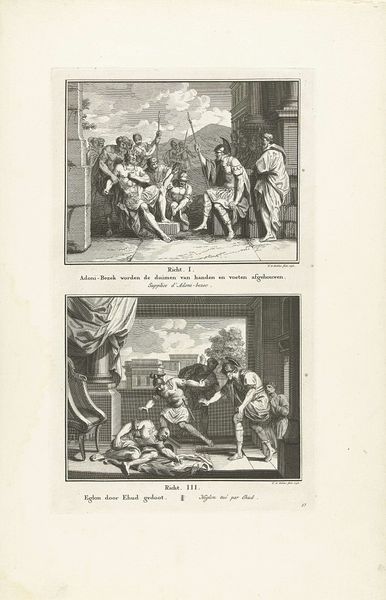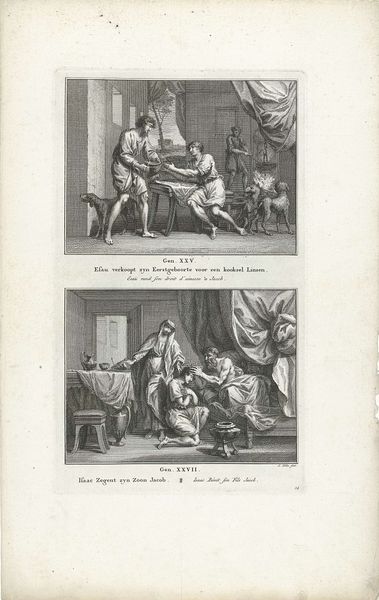
print, engraving
#
narrative-art
#
baroque
# print
#
islamic-art
#
genre-painting
#
engraving
Dimensions: height 340 mm, width 228 mm
Copyright: Rijks Museum: Open Domain
Bernard Picart made this print, "Indian Birth and Naming Ceremony," sometime between 1696 and 1733, and it offers a window into how European audiences perceived other cultures during the Enlightenment. The print depicts two separate ceremonies among the Banians, a term used to describe Indian merchants. In the upper panel, we see a birth ceremony, with the newborn presented to family members. The lower panel illustrates a naming ceremony, complete with children holding a cloth, perhaps to catch falling gifts or blessings. Picart never traveled to India; rather, his images reflect the exoticism and often skewed understanding that Europeans held toward non-Western societies. These depictions contributed to the construction of identity, both for the Europeans who consumed these images and for the Banians, who were seen through this lens. It's a reminder of how cultural exchange can be fraught with misinterpretation and power dynamics, shaping perceptions across continents.
Comments
No comments
Be the first to comment and join the conversation on the ultimate creative platform.

